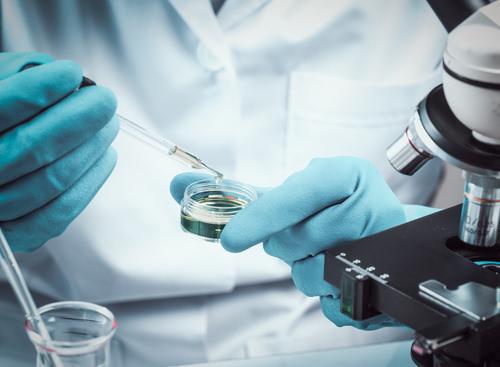Gene Therapy Using CRISPR-Cas9 Shows Promise as Safer, More Efficient Method to Treat RDEB, Preliminary Study Shows
Written by |

Gene therapy using CRISPR-Cas9 enabled precise correction in the lab of defective skin cells from a patient with recessive dystrophic epidermolysis bullosa, showing promise as a safer and more efficient way to treat the disease, compared with viral-dependent gene therapies currently under testing, a preliminary study shows.
The procedure restored the production of a functional type VII collagen — a key protein for keeping skin layers attached — and yielded long-term skin regeneration in mice.
The approach may be extended to a large number of collagen VII (COL7A1 gene) mutations, opening the way to precision medicine for RDEB, the researchers said.
The study, “Clinically-relevant correction of Recessive Dystrophic Epidermolysis Bullosa by dual sgRNA CRISPR/Cas9-mediated gene editing,” was published in the journal Molecular Therapy.
Different gene therapy approaches are currently under clinical testing for junctional epidermolysis bullosa (JEB) and recessive dystrophic epidermolysis bullosa (RDEB), with encouraging results.
Those strategies rely on delivering a correct copy of the faulty gene to a patient’s skin cells, grown in laboratory cultures. The gene transfer is made by infecting the cells with viral vectors genetically engineered to insert the correct gene. These vectors consist of viruses that have been stripped of their capacity to replicate and cause disease, but retain their ability to deliver genetic material to cells.
After skin cells have been gene transferred, they are grown in the laboratory into a sheet of cells that are transplanted to the person’s wounds.
Despite encouraging results, this strategy still faces some challenges: viral gene delivery can be insufficient, can lead to inaccurate expression of the functional gene, and can cause mutations in the patient’s genome.
The last is “particularly relevant for RDEB patients given their high proneness to carcinoma development,” the researchers said.
Building on prior work, researchers at Carlos III University and Centro de Investigación Biomédica en Red en Enfermedades Raras (CIBERER), in Spain, sought to test a more efficient and safer method to correct COL7A1 mutations in RDEB skin cells.
They used a non-viral strategy employing CRISPR-Cas9, a recently developed tool for high precision gene-editing — cutting or adding small pieces of DNA to a specific gene or other place in the genome. This system has been highly acclaimed by scientists because it is faster and more accurate than other existing gene-editing methods.
In this case, researchers used the approach in keratinocytes — primary cells of the outermost layer of the skin, or epidermis — collected from a patient with RDEB who carried the mutation c.6527insC in the COL7A1 gene.
The delivery did not rely on viral vectors. Rather, CRISPR-Cas9 components — a guide RNA and a DNA-cutting enzyme called Cas9 — were directly entered inside cells through pores created in the cell membrane by an electrical shock (electroporation).
Next-generation sequencing (NGS) and other molecular tools confirmed that the mutated region was successfully cut out from COL7A1 and that there were no detectable off-targets, or other regions in the genome that were affected.
The gene therapy strategy proved to be very efficient in the laboratory. The best combination of guide RNAs made 81% of the patient’s keratinocytes recover the production of type VII collagen.
When these engineered keratinocytes were grown and transplanted into mice, they were able to regenerate a normally structured and attached skin, and prevent blistering. Researchers noted that the keratinocytes were able to do so for a long time period (20 weeks).
As several rounds of skin replacement are expected to occur within that time, this meant that epidermal stem cells, which ensure skin and hair regeneration, also were corrected.
In contrast, keratinocytes that did not receive the gene therapy formed a fragile skin, with an epidermis separated from its underneath layer, the dermis, and prone to blistering.
More than 650 different mutations within COL7A1, which cause the different subtypes of RDEB, have been identified. The mutation targeted by this study, c.6527insC, is characteristic of Spanish and some Latin-American RDEB patients, and seems to be the most prevalent COL7A1 mutation.
The results provide “compelling preclinical evidence of the efficacy and safety of a novel CRISPR/Cas9-based” approach that is capable of correcting a highly prevalent mutation, the researchers said.
“This highly efficacious and one step strategy would enable quick translation to clinical application,” they concluded.





